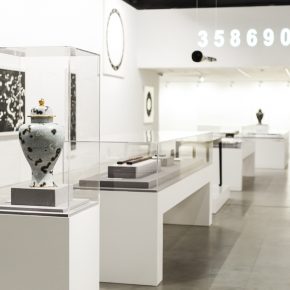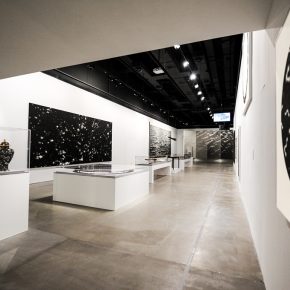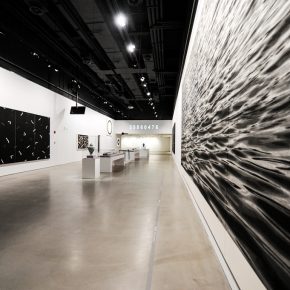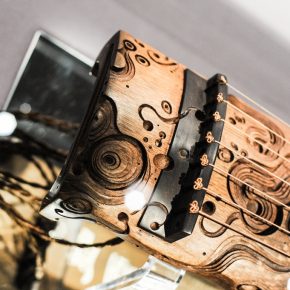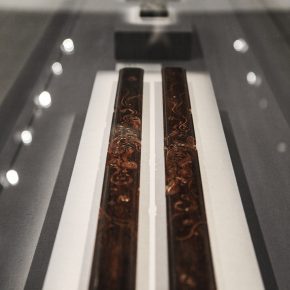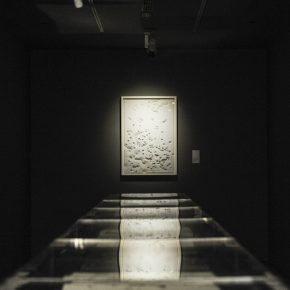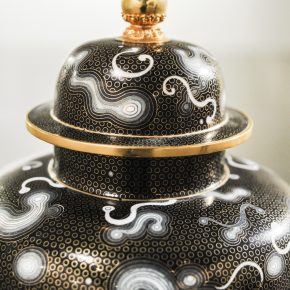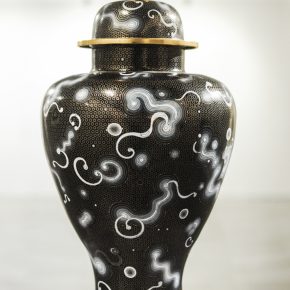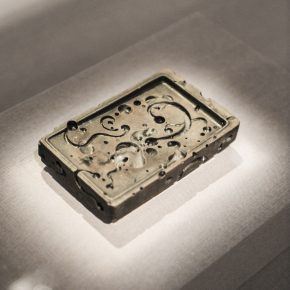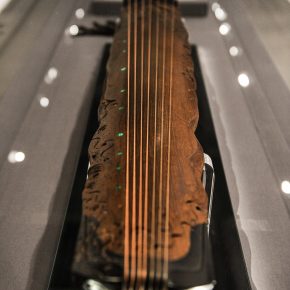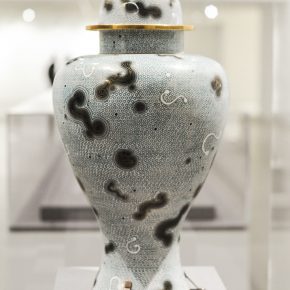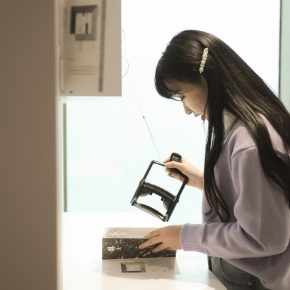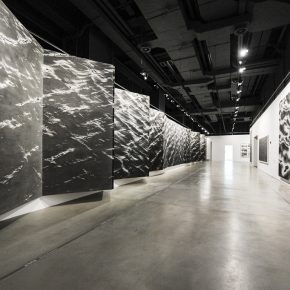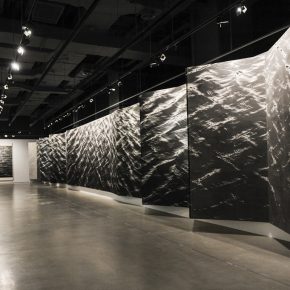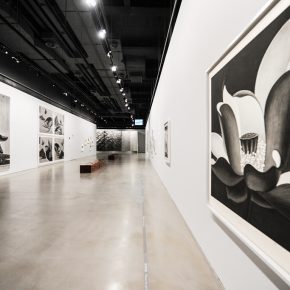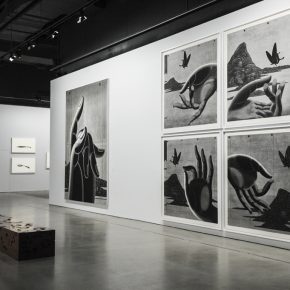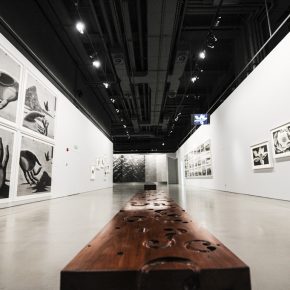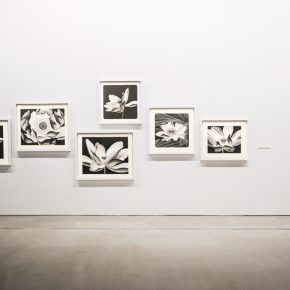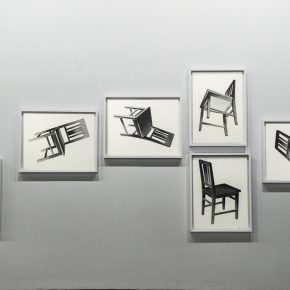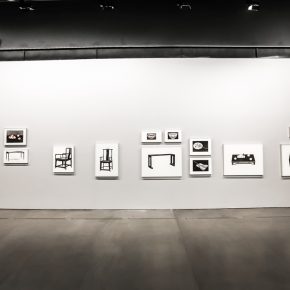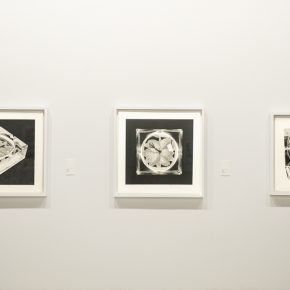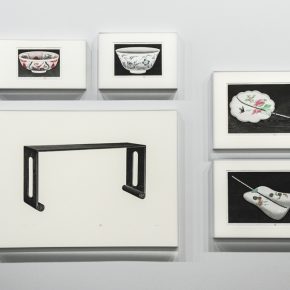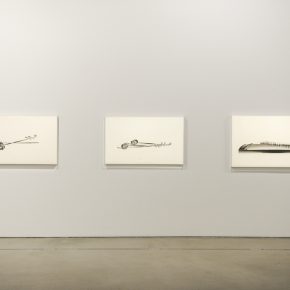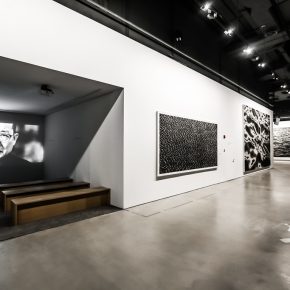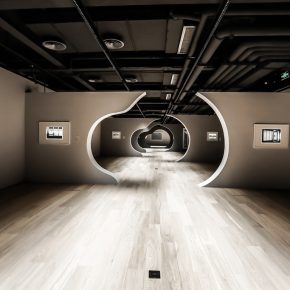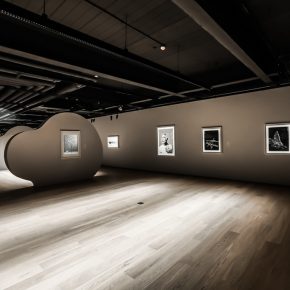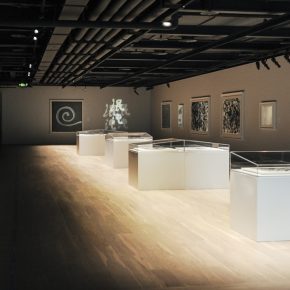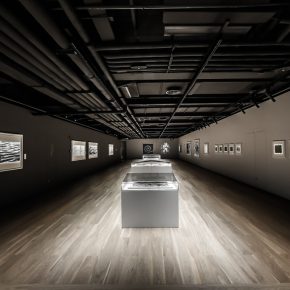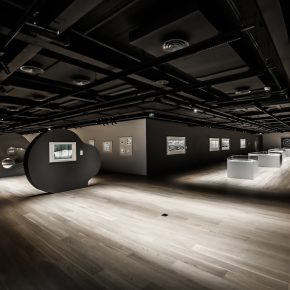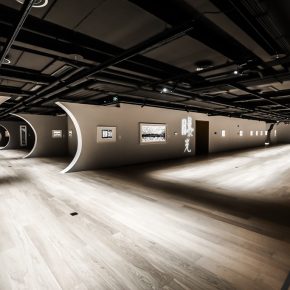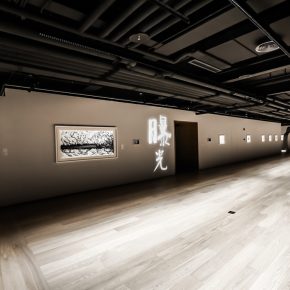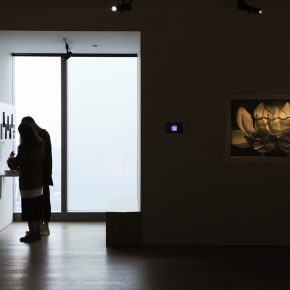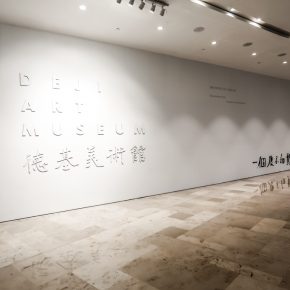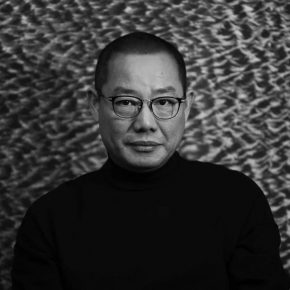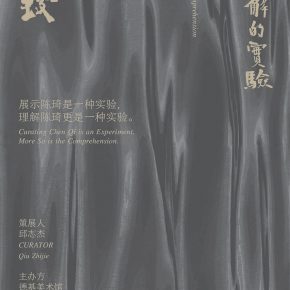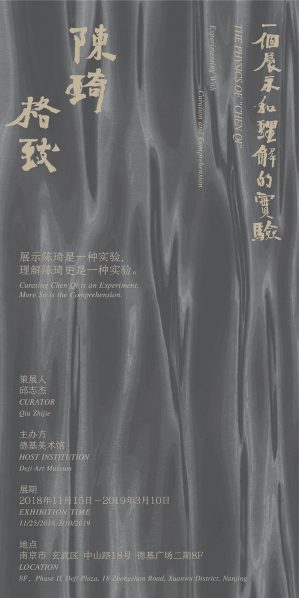
Deji Art Museum presents the exhibition The Physics of “Chen Qi”—Experimenting With Curation and Comprehension on November 15, 2018 and the opening ceremony will take place at 14:00 on November 25. The exhibition will continue through March 10, 2019.
Ai Lin, the director of Deji Art Museum stated in the interview: “A noteworthy solo exhibition always voluntarily bears the scholarly mission of “subverting the stereotypes and biases about the artist. They specially invited the internationally acknowledged curator Qiu Zhijie. In this exhibition, he deconstructs Chen Qi’s oeuvre of more than 200 installations and printmaking artworks created over a span of 35 years from 1983 to 2018 into nine sections. In an exhibition space of more than 2000 square meters on 8F and 28F, the exhibition is set to comprehend unceasingly this art experiment in the upcoming four months.”
On the 8th floor, the four sections—“Treatise on Superfluous Things,” “Mind-Seal,” “Glistering Ripples” and “Wormholes” creates a public recognized image of Chen Qi, and the works here are perfect in techniques, full of momentum like a monumentality permeating the space. On the 28th Floor, the five sections—“Exposure,” “Loner,” “Landscape,” “Rumination,” and “Chaos” presents a true romantic and mad Chen Qi along with his exploration in his experiment.
If exhibiting Chen Qi’s work has been an experiment, understanding Chen Qi is even more so. Nine subjects, nine tunnels of comprehension, is Chen Qi a cultivated controller or a mad experimenter? We believe that audience will be able to meet a familiar Chen Qi but is differentiated from our common understanding.
Preface—A Laboratory ReportBy Curator Qiu Zhijie
If exhibiting Chen Qi’s work has been an experiment, understanding Chen Qi is even more so. Regarding an artist with a rich and acknowledged corpus of works, among which many are endorsed by discourses in art history, people already hold presumptions. Yet, I rather believe that these propositions are mingled with stereotypes—outstanding artists surpass preformed conclusions and biases, always leaving space for more creative understanding of his works. As soon as the approach itself is experimental enough, a refreshing view of Chen Qi’s work will unravel before us. The curation of this exhibition is precisely such a challenge for me. My objective is to subvert the secured narratives about Chen Qi as a perfectionist and to depict him as someone with vision and creativities vibrant and extensive. Nor would I discuss in length about the spirit of ink and water in water printing, I would, however, capture the photorealism in his works. In Chen Qi, I see an abstractionist and even a conceptualist; a passionate painter who is skeptical about painting.
Based on this curatorial tactic, we organized nine subjects, or nine keywords in two exhibition rooms, which are also nine tunnels of comprehension.
On the 8th floor, we see artworks that are more familiar to most of us. ‘Treatise on Superfluous Things’ unfolds the course of the artist’s spiritual practice that scrutinizes and reflects upon objects. ‘Mind-Seal’ focuses on how gaze directed at objective phenomenon gives birth to the power of symbolic meanings. ‘Glistering Ripples’ presents how matter or landscape stretch into the entire world. As one end of ‘Wormholes’ leads to cosmology, the other opens to tangible traces. History of time incarnates and drizzles down, turning into dappled light. The works here are perfect in techniques, full of momentum. A monumentality permeates the space.
On the 28th floor, we walk into a headstrong, romantic, mad and deconstructive Chen Qi. ‘Exposure’ is the admiration for process. There are plenty of moments worth stopping over on the road to presentation. ‘Loner’ tries to archaeologically excavate from the earliest phase of the artist’s career the genes leading to his later works, frenetically venturing out into reformulating a progressing practice as pre-constructed, presuming all future works to be a memory and therefore denying the sequence of time. ‘Rumination’ continues this effort. As the artist’s work develops into a greater scale, it begins to grow reproductively like artificial intelligence forming self-consciousness and losing control. In ‘Chaos’, Chen Qi becomes a violent maker of trace who is constantly concerned with abstract art. What ulterior motives must he harbor when presenting to us refined and familiar natural scenes, wearing a patient and sarcastic smile? ‘Landscape’ is a reconciliation. Objective phenomenon, memory, movement and light, meditation and investigation arrive at concrete incidents of time-and-space in a loner’s journey, here and now, there and then, still being.
The nine tunnels of comprehension extend in different layers above and across one another, winding, weaving—crosses and links. Together they build a Borges’ garden of forking paths, and in it every tunnel continues to extend and sprawl. Such an experiment in comprehending and exhibiting Chen Qi’s works wouldn’t clarify for us Chen Qi’s practice. Instead, it becomes more animate and dynamic, becoming an expanse of glistering ripples. Our endeavor for comprehending Chen Qi’s works is destined to confront the powerlessness of language in an endless rumination.
The Meaning of ArtBy Artist Chen Qi
Poetry is the spontaneous overflow of powerful feelings: it takes its origin from emotion recollected in tranquillity.
—William Wordsworth
During the 1980s, as I was at university, China was undergoing the initial phase of reform and opening up. The nation opened up its long bolted gate. Waves of thinking in art flooded in from the west, lustrous and bizarre for us young people who had barely begun painting. Though I didn’t altogether comprehend those strangely novel images, they did provoke an unidentifiable urge inside me. I was compelled to paint many modern looking oil paintings. Yet as days went by, I felt the lack. I became sceptical of what I was doing and the significance of it if any. Doubts gradually emerged; “What is painting?” “why do I paint?” This was how my thinking around art began.
What is painting? What’s its significance? These may seem to be idle questions that rightly receive varying responses, and none of which would be definite. However, for me, it’s a question that has to be thought through. Otherwise, painting would be meaningless. I had spoken about my doubts to many and tried to find answers in books. The results were disappointing. Later on, I realized it was a question that could only be answered by oneself, not through the others' help. From then on, I no longer followed prevailing trends in art and stopped shadowing after novel forms. I quieted down and began experiencing life. I heeded to my inner voices and transformed them into visually presented imageries.
Since 1986, and till these days, my art practice has continued to evolve around such state of mind. Artworks have come to fruition as the journey of life unravels. Although shortcomings exist, the works truthfully reflect my feelings, my appreciation of the quotidian and my imageries excavated from deep consciousness. To meditate, ponder and fabricate, my practice is based on the running currents of consciousness and static emotions. They are abstract consciousness, previously buried deep in mind, now externalized.
Spanning historical times, places, cultural environments and social contexts, paintings have performed varying social functions and have been spiritual aspirations for many. Histories of art are written from diverging perspectives, and painting means something else for every other painter. In 2017, inside Xu Xianxiu’s tomb chamber from Northern Qi dynasty, located 30 km north of city Taiyuan, I carefully examined mural paintings at the corridor and the main chamber walls under dim lights. My eyes lingered on the exuberant faces of the soldiers walking in procession while picturing how the painters must have looked like: their ancestries, families, personal characters and talented skills. Maybe, they were folk painters invited to the court. Maybe they were acclaimed court painters of the Northern Qi dynasty. Throughout the history, painting has been granted varying literary connotations and subject to contemporary social needs. For artists of the European classicism, art was a craft, a trade like any other in exchange for food and shelter. Hence, their practice depended upon client orders regardless of who their patrons were, be it imperial families, churches, nobilities or marketplaces. In ancient China, there were those fond of painting. They were the cultural elites, a class of literati whose living didn't rely on painting as a craft. Their creative practice revolves around resolving spiritual predicament. Max Loehr once said of the literati painters, “the practice of painting was utilized for self-cultivation, exchanges among friends and the constant refinements of a literati spirit.” Over hundreds of years, the literati have produced outstanding classics of Chinese paintings, and they are the spiritual mentors of my practice.
Painting is how I ruminate over the meaning of life. It is the ferry boat conveying me to the opposite bank. I take painting as an essential lesson for my thinking process. To paint is to comprehend, to search into one’s inner seclusion. It is a quest for the meaning of life and an attempt to interpret a man’s life. I try to shed insights on the invisible second nature by way of the visible first, to surpass the infinite beyond the finite. When painting no longer serves a utilitarian purpose or functions as pictorial records and superficial representations of everyday scenarios, it attains a freer scope and broader cultural implications. As Alain de Botton writes in How Proust Can Change Your Life: Not a Novel, painting’s sense of beauty is unrelated to the content depicted. The artist brings together lines, colours, materials and textures through his or her distinctive handwork and fuses them into visual images, subsequently accomplishing the matter-to-mind transfer. The beauty originates from the artists’ cognizance of objective reality and the surfacing of his or her true emotions.
I hope my art goes beyond nations, cultures, regions and epochs and withstands the trials of time and other cultural contexts. I hope it could be comprehended by way of a resonating beat and tugs the heartstrings. There is no need for me to misappropriate and abuse the socially indexical symbols or labels of traditional cultures in order to please the market and audiences. Artistically and visually, I deliberate over commonalities shared across mankind, the softest and the most vulnerable which is at the same time the deepest in man. I hope to open up an aperture for people to momentarily detach from the predicament in everyday realities, to let people into a state without their selves and to feel the existence of life and the beauty of things in full.
I believe the questions, “what is art?” and “what does art mean to me?”, unfold differently for every artist. Like the question of ‘beauty’, art has no standard answers. Its significance in life varies for everyone. Mu Xin once proposed: “there are three categories of artworks; the first achieves significance in reality but not in eternity. The second achieves significance in eternity but not in reality. The third achieves both.” I admire the immortal classics of art. They aren’t limited by their cultural backgrounds, regions and times and will always move the hearts. They are the spiritual wealth shared across mankind and my life-long aspiration for my art practice.
For sure, our comprehension of art could only advance bit by bit. Different stages of life bring about distinct views about art. Thus, how life and art mean to us subtly changes as our intellect matures. As Shakespeare alludes to in Macbeth that “[life] is a tale. / Told by an idiot, full of sound and fury, / Signifying nothing”, and Yuval Noah Harari echoes in his book Homo Deus: A Brief History of Tomorrow, “life has no script, no playwright, no director, no producer—and no meaning. To the best of our scientific understanding, the universe is a blind and purposeless process, full of sound and fury but signifying nothing.” For me, it is exactly due to this philosophical myth of life’s significance propels us to search for meaning in what’s supposedly meaningless, to forget oneself in the making of art and eventually, to resolve the predicament of life. Such is the truth of art.
Mid-Autumn Festival, 2018
About the exhibition
THE PHYSICS OF “CHEN QI”: Experimenting With Curation and Comprehension
Artist | Chen Qi
Curator | Qiu Zhijie
Designer | Zhao Qing
Opening Time: 2018.11.25 14:00
Exhibition Time: 2018.11.15-2019.3.10
Host Institution: Deji Art Museum
Location: 8F, Phase ll, Deji Plaza, 18 Zhongshan Road, Xuanwu District, Nanjing
Courtesy of the artist and Deji Art Museum.



